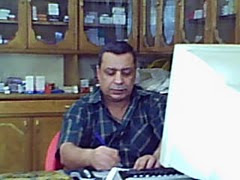To arrest cardiac arrest we should first understand what is a cardiac arrest.
According to Wikipedia "Cardiac arrest is the abrupt cessation of the normal circulation of blood due to failure of the heart to contract effectively during systole". Systole meant here is the contraction of the 2 cardiac chambers that push blood to the lungs and the rest of the body.
Blood circulation delivers Oxygen to all parts of the body, and "arrested" circulation stops this delivery. When brain supply is lacking (cerebral hypoxia), the victim loses consciousness and normal breathing. Immediate response is crucial to improve neurological recovery and retain survival.
When unexpected cardiac arrest leads to death, this is called sudden cardiac death. If treated early enough, cardiac arrest is potentially reversible. The primary first-aid of cardiac arrest is cardiopulmonary resuscitation (CPR) to provide circulatory support until definitive medical treatment is available, this treatment may differ according to the case but it is often defibrillation.
Heart muscle has its intrinsic rhythmic contraction, that is originated in a specialized electric conduction system within the heart. The electric conduction starts by depolarization of the cell membrane, followed by re polarization and the repetition of these electric changes causes an electric an electric current that ends in contraction of the cardiac muscle.
Cardiac muscle is composed of muscle fibrils that follow the "all or none" rule, i.e. either all the fibrils contracts altogether to cause the cardiac muscle to contract, or it will not contract.
The various parts of the conduction system and, under abnormal conditions, parts of the heart muscle are capable of spontaneous electric discharge. However, there is a cardiac pacemaker (do we need to be involved in unnecessary terminology?, well it is called SinoAtrial node or SA node).
This SA node normally discharge most rapidly, and it is where depolarization spreading from to the other regions before they discharge spontaneously. The rate of discharge of SA node discharge determines the rate at which the heart beats.
This is why scientists have developed what is known as defibrillator which delivers a calculated dose of electric energy to the affected heart. This depolarizes a critical mass of the cardiac muscle, terminates the arrhythmia, and allows the normal pacemaker to restore the normal sinus rhythm, thus normalizing the cardiac rhythm.
Answering the title question, whether we can arrest the cardiac arrest is, yes we can if we interfere in the appropriate time.
Saturday, December 15, 2007
Subscribe to:
Post Comments (Atom)

Useful Resources
- Amazon Goodies Review
- Heavy Cream Facial Masks
- Health News Headlines
- BEST WAY TO LOSE WEIGHT
- Subscribe to waheed-elqalatawy
- Search Amazon
- WEIL
- Social Bookmarking
- Fast Fat Burner
- GruntDoc
- Blogger TOS
- HHS
- FEMA-Individuals
- HHMI
- PNAS
- US-Today-Health
- Sciencemag-Med
- AgricultureDepart-US
- Plastic Surgery Photos
- BloggerNow
- Netscape-Health
- NIH
- msn-Health
- WHO
- REUTERS/health
- Count-2000-Calories
- ATKINS
- NewYorkTimes
- SanePR
- Feedburner
- Harvard-Public Health
- FDA-Diabetes
- Calorie-Count
- Blog Dirs
- <$BlogPreviousItemTitle$>
No comments:
Post a Comment